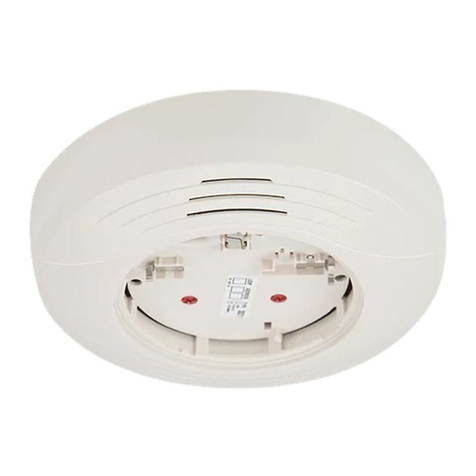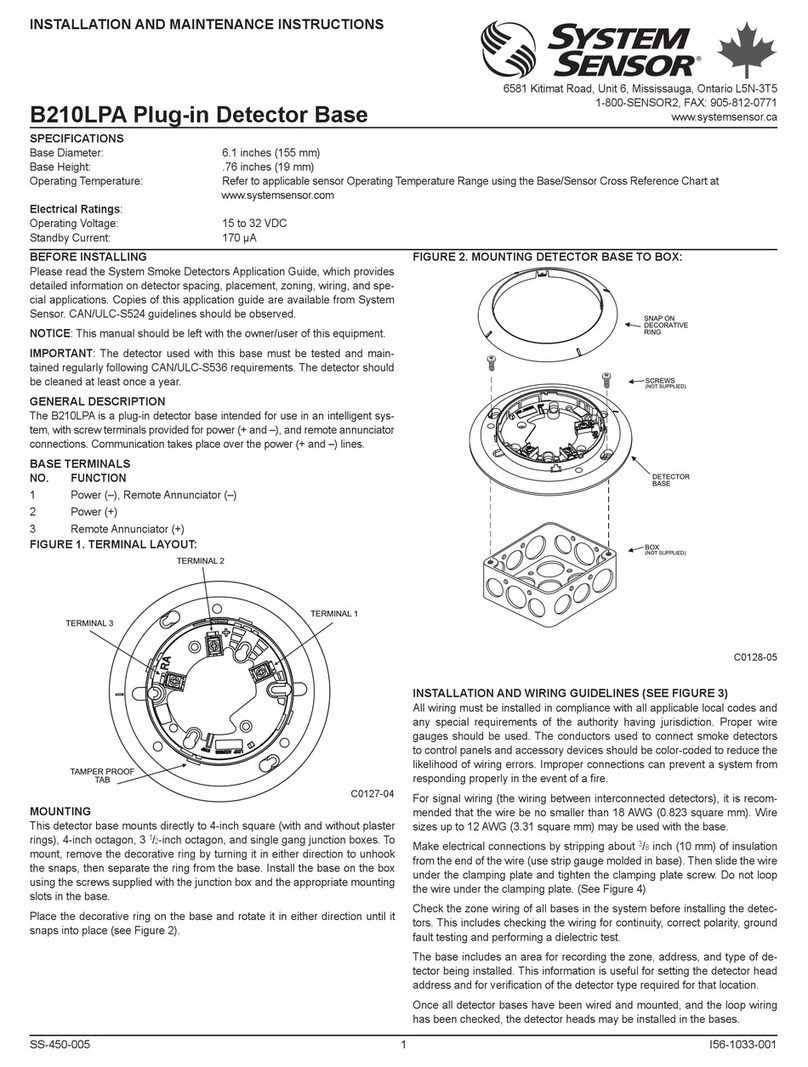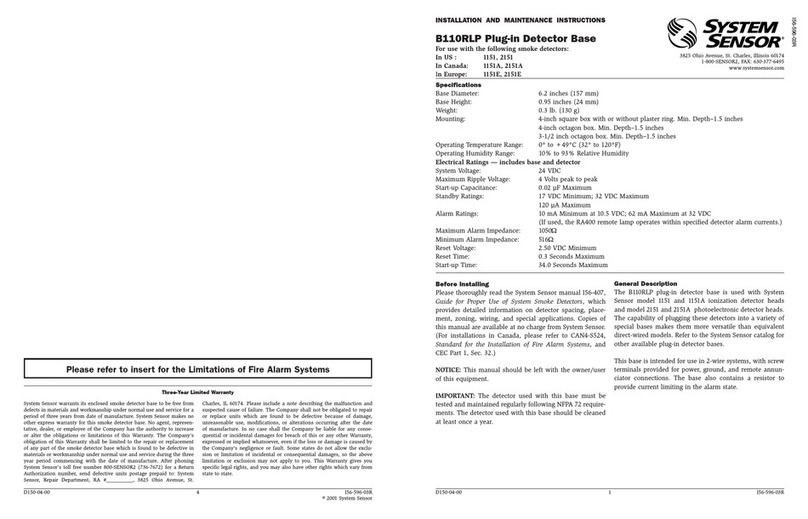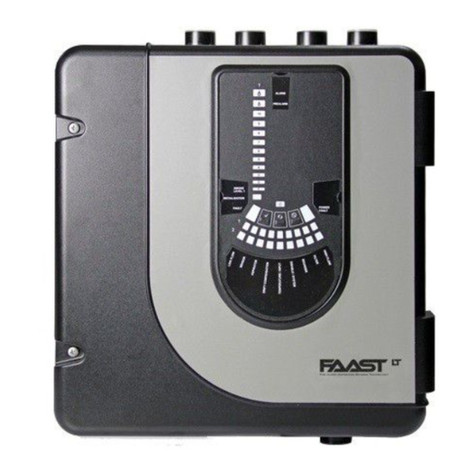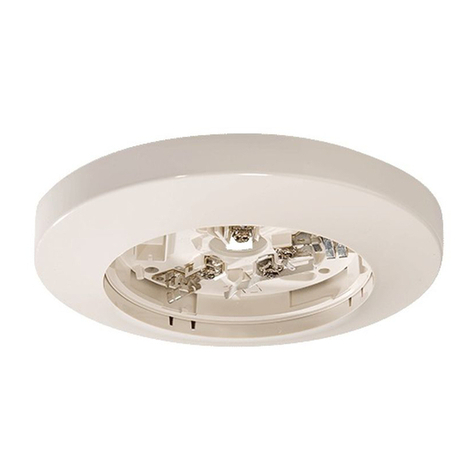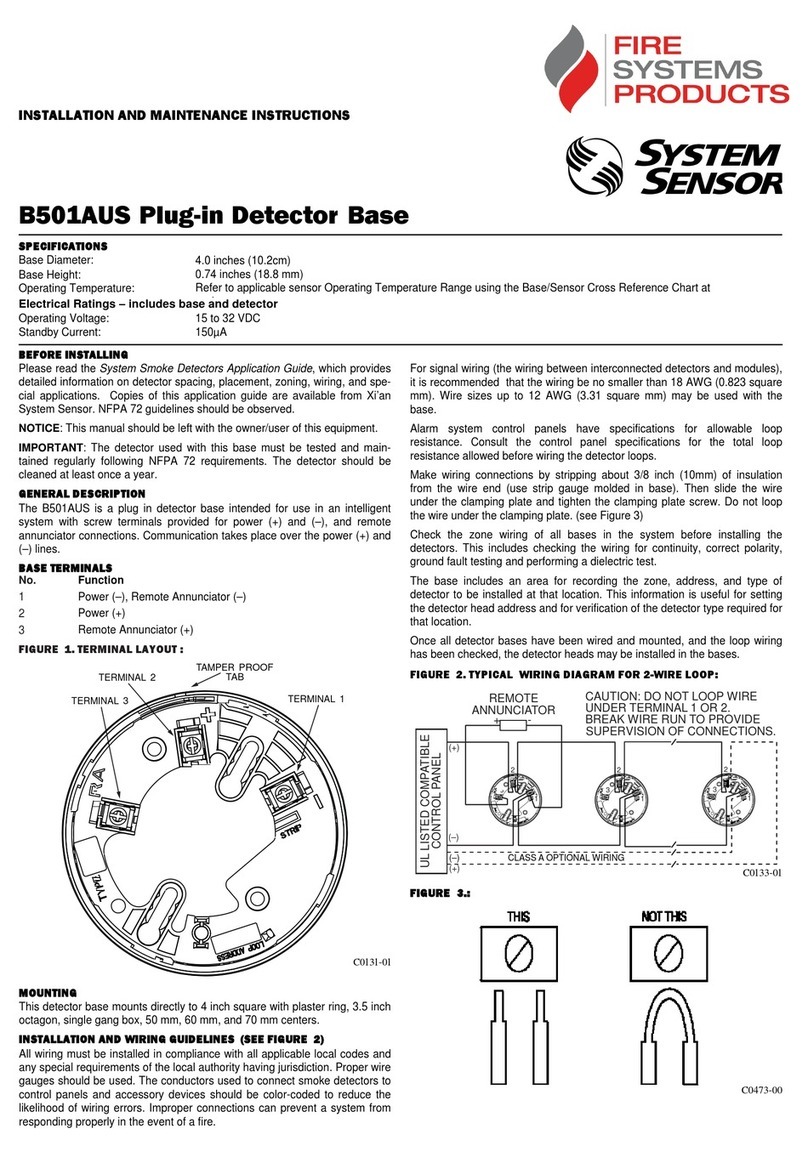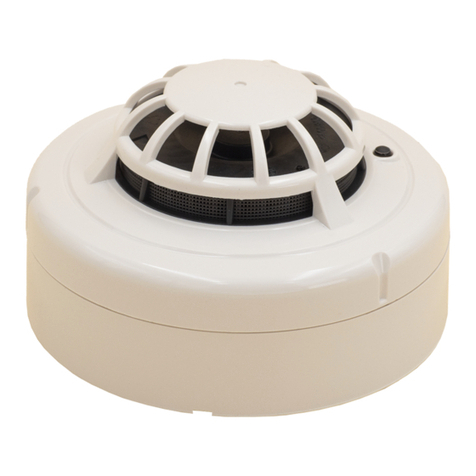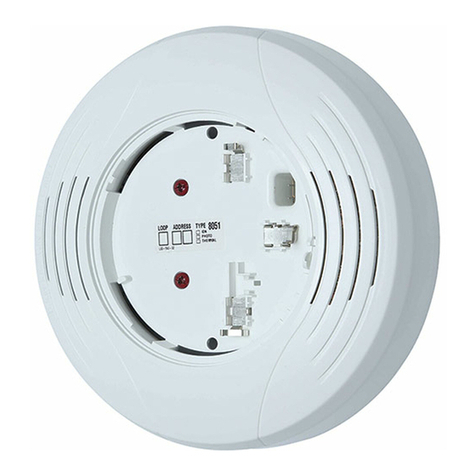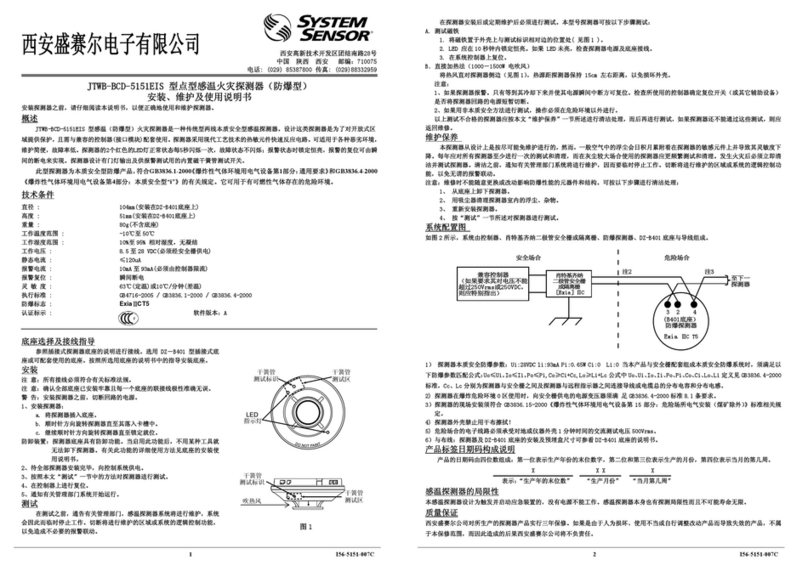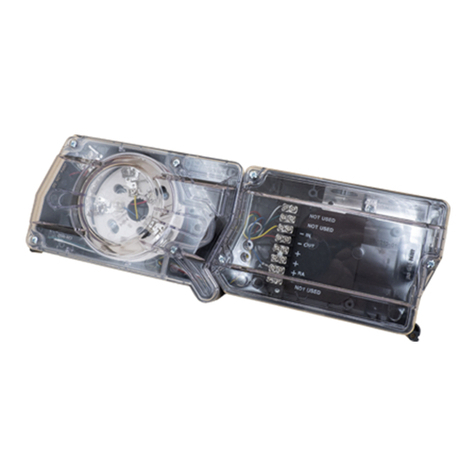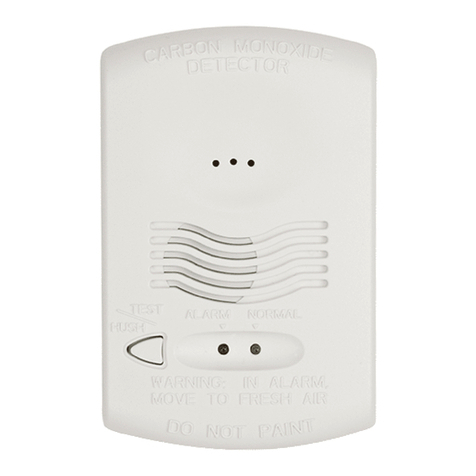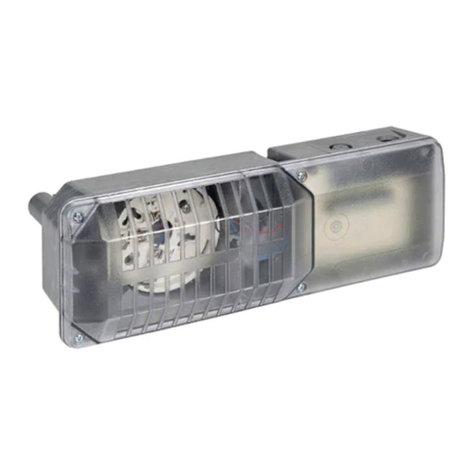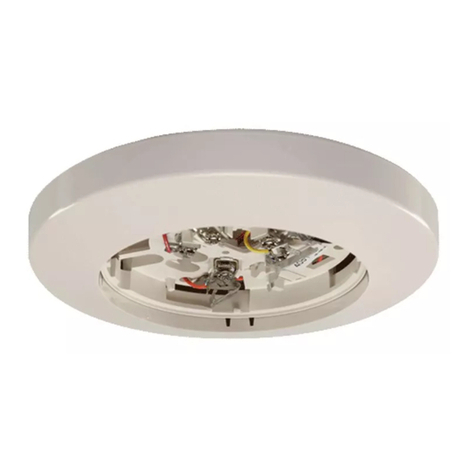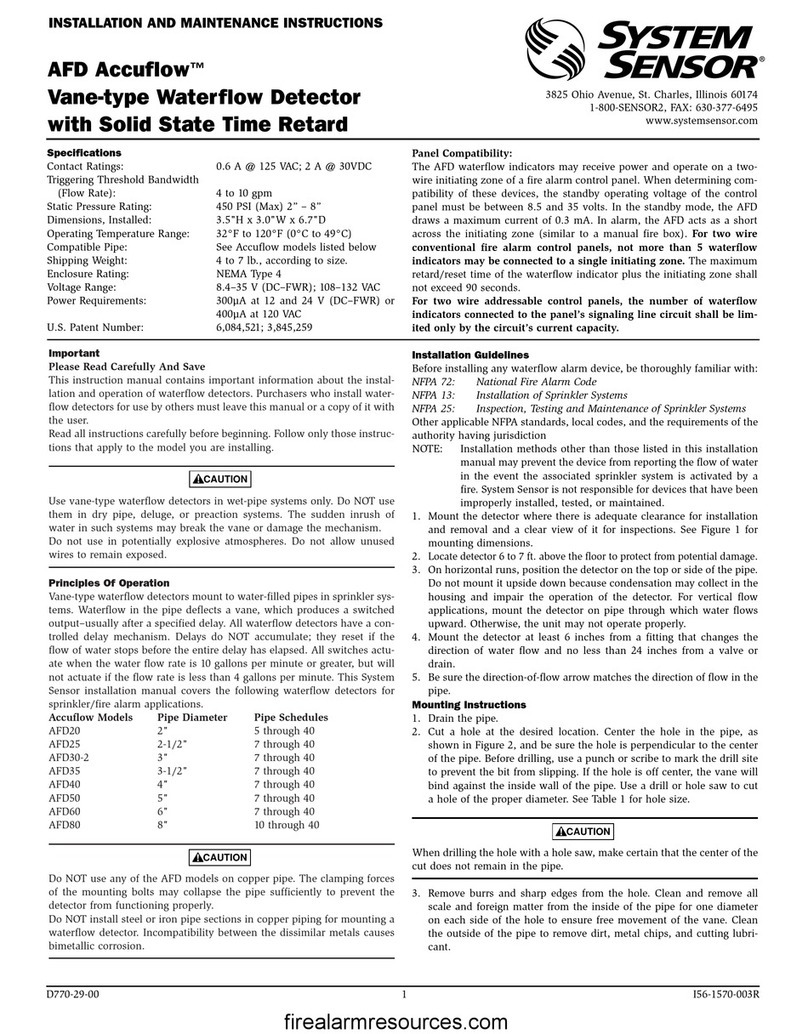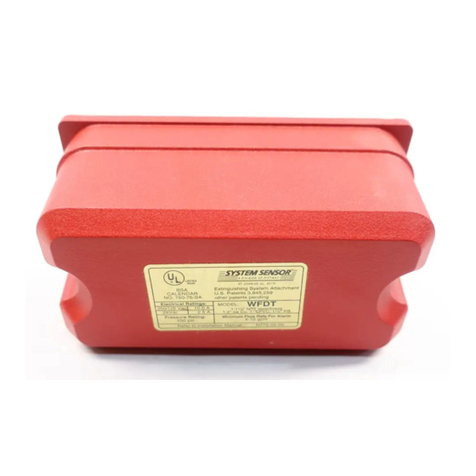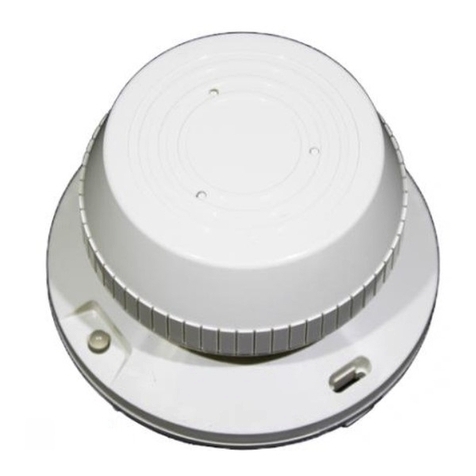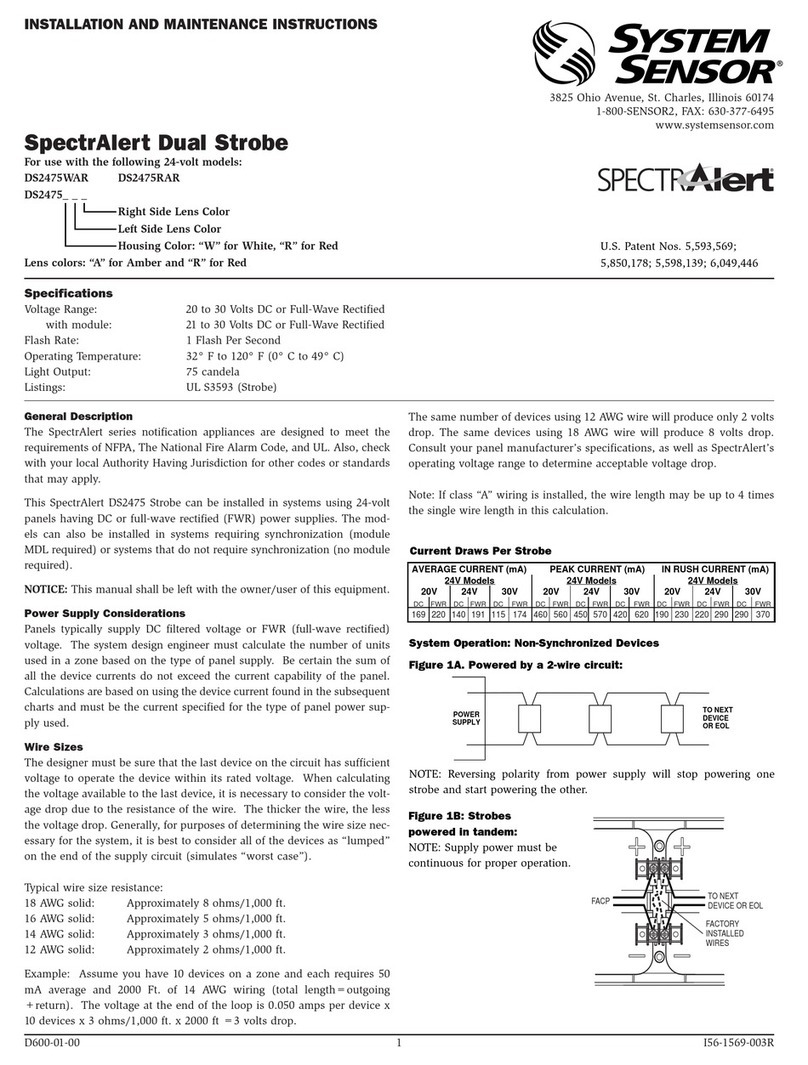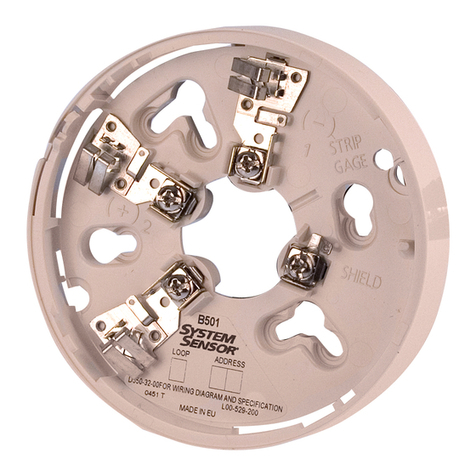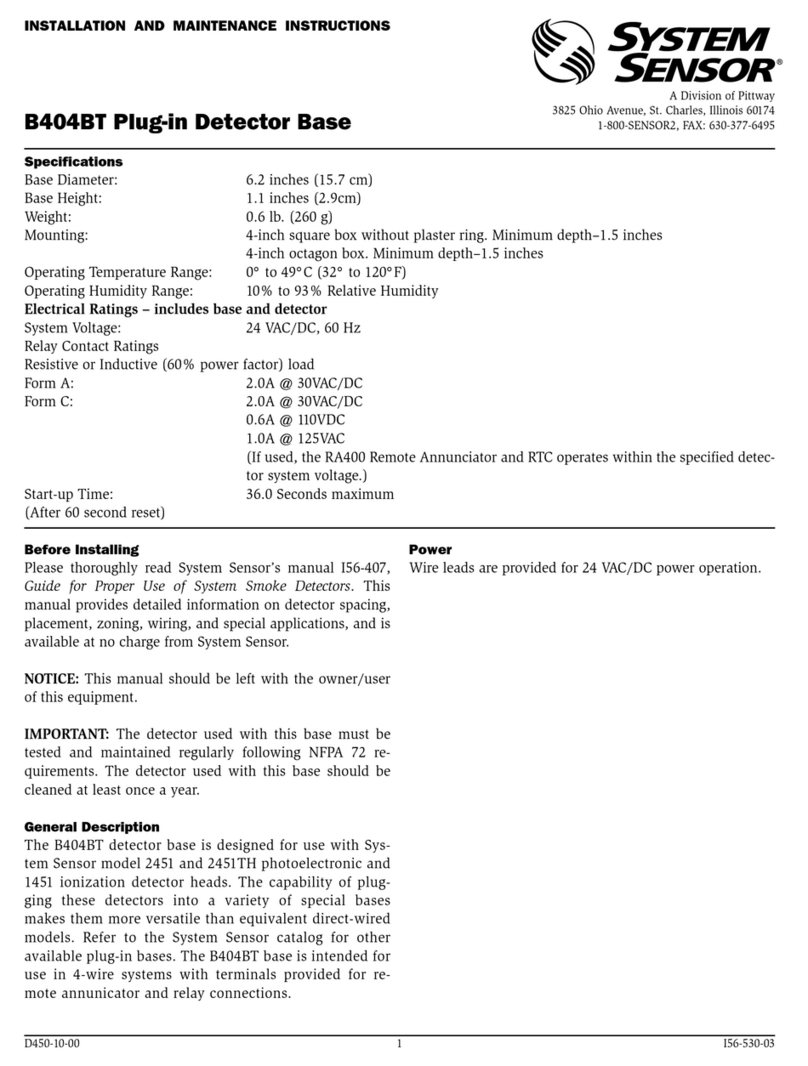
D770-24-00 1 I56-1452-004R
WFDEXP Explosion Proof
Vane-type Waterflow Detectors
INSTALLATION AND MAINTENANCE INSTRUCTIONS
Important
Please Read Carefully And Save
This instruction manual contains important information about the instal-
lation and operation of waterflow detectors. Purchasers who install
waterflow detectors for use by others must leave this manual or a copy
of it with the user.
Read all instructions carefully before beginning. Follow only those instruc-
tions that apply to the model you are installing.
Use vane-type waterflow detectors in wet-pipe systems only. Do NOT use
them in dry pipe, deluge, or preaction systems. The sudden inrush of
water in such systems may break the vane or damage the mechanism.
Principles of Operation
Vane-type waterflow detectors mount to water-filled pipes in sprinkler
systems. Waterflow in the pipe deflects a vane, which produces a switched
output–usually after a specified delay. All waterflow detectors have a
pneumatically controlled mechanical delay mechanism. Delays do NOT
accumulate; they reset if the flow of water stops before the entire delay
has elapsed. All switches actuate when the water flow rate is 10 gallons
per minute or greater, but will not actuate if the flow rate is less than 4
gallons per minute. This System Sensor installation manual covers the fol-
lowing waterflow detectors for sprinkler/fire alarm applications.
Pipe Max. Pressure
Model Pipe Size Schedule Rating (psig)
WFD20EXP 2˝10 thru 40 450
WFD25EXP 21⁄2˝10 thru 40 450
WFD30-2EXP 3˝10 thru 40 450
WFD35EXP 31⁄2˝10 thru 40 450
WFD40EXP 4˝10 thru 40 450
WFD50EXP 5˝10 thru 40 450
WFD60EXP 6˝10 thru 40 450*
WFD80EXP 8˝10 thru 40 450*
*Maximum Pressure Rating 400 psig as approved by Factory Mutual
Research.
Do NOT use any of the WFD models on copper pipe. The clamping forces
of the mounting bolts may collapse the pipe sufficiently to prevent the
detector from functioning properly.
Do NOT install steel or iron pipe sections in copper piping for mounting a
waterflow detector. Incompatibility between the dissimilar metals causes
bimetallic corrosion.
Specifications
Contact Ratings: 10 A @ 125/250 VAC ; 2.5 A @ 24 VDC
Triggering Threshold Bandwidth (Flow Rate): 4 to 10 gpm
Static Pressure Rating: See models listed below
Dimensions, Installed: 4.0˝H × 8.8˝W × 7.0˝D
Operating Temperature Range: 32°F to 120°F (0°C to 49°C)
Compatible Pipe: Steel water pipe, schedule 10 or 40.
Shipping Weight: According to size.
Enclosure Rating: NEMA 4 indoor/outdoor use
Hazardous Atmosphere Classification:
Class I, Groups B, C, D Div, 1; Class II, Groups E, F, G Div. 1; Class III Div. 1
US Patent Number: 3,845,259; 4,782,333; 5,213,205
NOTE:
Not for use in potable water systems, systems where sand or
other material is present or systems employing other than water.
Installation Guidelines
Before installing any waterflow alarm device, be thoroughly familiar
with:
NFPA 72: National Fire Alarm Code
NFPA 13: Installation of Sprinkler Systems, Section 3.17
NFPA 25: Inspection, Testing and Maintenance of Sprinkler Systems,
Section 5.3.3.2
Other applicable NFPA standards, local codes, and the requirements of the
authority having jurisdiction
NOTE: Installation methods other than those listed in this installation
manual may prevent the device from reporting the flow of water
in the event the associated sprinkler system is activated by a
fire. System Sensor is not responsible for devices that have been
improperly installed, tested, or maintained.
1. Mount the detector where there is adequate clearance for installation
and removal and a clear view of it for inspections. See Figure 1 for
mounting dimensions.
2. Locate to protect from damage – 6 to 7 feet above the floor.
3. On horizontal runs, position the detector on the top or side of the pipe.
Do not mount it upside down because condensation may collect in
the housing and impair the operation of the detector. For vertical flow
applications, mount the detector on pipe through which water flows
upward. Otherwise, the unit may not operate properly.
4. Mount the detector at least 6 inches from a fitting that changes the
direction of water flow and no less than 24 inches from a valve or
drain.
5. Be sure the direction-of-flow arrow matches the direction of flow in the
pipe.
Contact the appropriate personnel regarding the proper tools and proce-
dures when installing this device in a “HAZARDOUS” area. Disconnect
supply circuits before opening the cover, to reduce the chances of ignition
of hazardous atmospheres. Secure the cover and cover screws prior to
activating circuits. Tighten cover screws to 40 in. lbs. min.
6581 Kitimat Rd., Unit #6, Mississauga, Ontario, L5N 3T5
1-800-SENSOR2, FAX: 905-812-0771
www.systemsensor.ca

